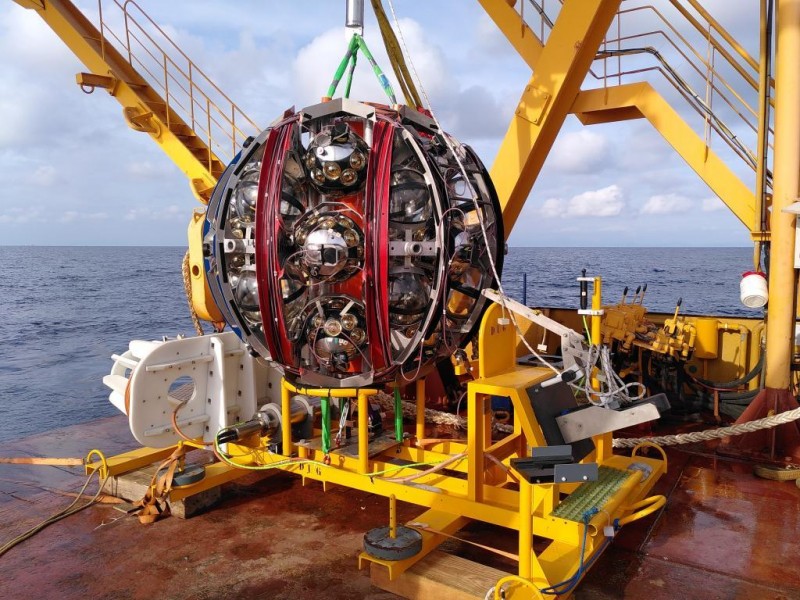Moroccan experts are working on advanced information systems to examine the data that will be collected by the telescope in the Mediterranean’s deep water.
Morocco is the only Arab and African country that is participating in the construction process of the world’s largest marine telescope known as “KM3Net” or the “Next Generation of Neutrino Telescopes” project.
Moroccan scientists from Mohammed V University in Rabat and Mohamed I University in Oujda are taking part in the development of KM3Net alongside scientists from Spain, Italy, France, and Greece.
The Faculty of Science in Rabat created a unit specialized in the manufacture of digital optical units for the telescope, while the Faculty of Science in Oujda launched a unit specialized in the manufacture of electro-optical telescopes.
The purpose of the research project is to develop basic sciences in various fields and prompt the public to discover the latest technologies.
Once completed, the telescope will be placed in the deep sea of the Mediterranean to examine energy sources and study the fundamental properties of the neutrinos.
“The telescope is still under construction, it has so far been equipped with some units and is expected to be ready by the end of 2025,” Yahya Tayalati, a research professor at Mohammed V University and the coordinator of the KM3Net project in Morocco told the Middle Eastern news outlet Al Jazeera.
Morocco’s Ministry of Higher Education has allocated financial support of MAD 2 million dirhams ($220.924) to support the project. Participating universities have also contributed to the project by providing financial and logistical support.
Morocco’s participation in the manufacture of the telescope is a distinct opportunity as it will open doors to several other scientific projects in the country.
Moroccan researchers are involved in the development of advanced information programs to analyze the data recorded by the device.
The North African country plays a leading role in the search for exotic primary particles.
Tayalati noted that Morocco’s participation is important as it “ensures a high-quality academic composition of young Moroccan researchers aimed at bringing advanced technology and expertise to the country.”
Yahya Tayalati was awarded the prestigious 2021 Mustafa Prize, the top science and technology award granted to researchers and scientists of the Islamic world.
Largest marine research project in the world
KM3Net is a research infrastructure project that houses the next generation neutrino telescopes. The project consists of a large network of marine telescopes specialized in monitoring neutrino particles at several locations and using time-setting devices, as well as a range of advanced electronic devices.
The telescopes are built to detect volumes between megatons and several cubic kilometers of clear sea water. KM3Net scientists are committed to search for neutrinos from distant astrophysical sources such as supernovae, gamma ray bursters or colliding stars.
The project first appeared on the 2006 European Strategy For Research Infrastructure Forum road map and officially became one of Europe’s priority projects in 2009.
“This unique device will open a new door into the universe, seeking to sense the very low light from atmospheric and cosmic neutrino reactions in the water, and we seek to study the characteristics of these details through their oscillations to measure the mass hierarchy,” underlined the lead researcher Yahya Tayalati.
The project aims to promote the scientific culture of basic physics and dive into the depths of understanding high-energy cosmic natural phenomena. The research aims to enable scientists to “find answers to some of the questions that have been pending so far, such as the origin of the cosmic beam.”
The next generation of neutrino telescopes is one of the largest scientific research programs where a range of disciplines such as electronics, electrodynamics, and fiber optic communication overlaps in the manufacture of the telescopes.


